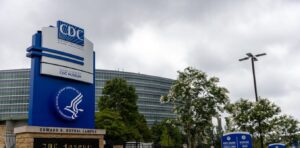Five common – and preventable – fleet accidents

When an accident happens, it’s often because someone made a mistake – in other words, it’s usually preventable. For a professional driver, even the smallest mistake can have a big impact on their driving career. But what does the law consider to be a preventable accident?
“Any accident involving the vehicle unless properly parked, which results in property damage or personal injury and in which the driver failed to do everything he possibly could have done to prevent or avoid the accident.”
Here are five common accidents that are considered to be preventable:
Backing accidents. Responsibility for backing safely is entirely on the driver. Backing is dangerous only if you neglect to make sure the way is clear during the entire movement. Backing should be avoided as much as possible.
Prevention tip: Surrounding hazards can be avoided if you familiarize yourself with an area first – both when you’re pulling into a property and when you’re leaving. Fleet yards can also be optimized to help prevent backing accidents by using reflective paint and warning signs to make hazards more visible.
Rear-end collisions. There are a number of situations where rear-end collisions may occur, whether it’s a driver colliding with the rear of the vehicle ahead or the vehicle to the rear striking the driver’s vehicle. These collisions can be the result of sudden stops at intersections, grade crossings, passenger stops, when preparing to turn or park, or when improperly parked or allowed to roll back before starting. In the eyes of the law, these types of accidents are seldom excusable.
Prevention tip: Most rear-end collisions can be avoided by foresight in controlling speed and allowing sufficient following distance. Watch the traffic situation ahead of the vehicle ahead so you can anticipate the need to stop. Stop gradually — not suddenly. Also, take steps to make your vehicle as visible as possible. Use extra conspicuity tape, lights and other reflective material to help make your truck easier to spot.
Intersection accidents. Stop lights, stop signs or right-of-way is no protection against collision with violators, funeral processions, fire, police, or ambulance vehicles.
Prevention tip: This risk can be addressed through defensive driving courses that promote tighter turns, and proper mirror adjustments that help spot the threats coming up on the right side of the trailer.
Parking accidents. Roll-away accidents from a parked position normally should be classed preventable. This includes unauthorized entry into an unlocked and unattended vehicle, failure to properly block wheels or to turn wheels toward the curb to prevent vehicle movement.
Prevention tip: Many fleet orientation programs are encouraging drivers to park several rows away from any active traffic lanes. Not only will this help cut down on preventable parking accidents, it also lends itself well to driver fatigue management – a quieter location to get a restful sleep and a healthy walk to the truck stop itself.
Traffic lane encroachment accidents. Such accidents result from passing, weaving, squeeze-plays, shut-outs or entering a line of moving traffic. Such accidents are caused by trespassing on the right of others to move in a straight line without interference.
Prevention tip: One simple solution to this type of risk is to ensure your mirrors are properly adjusted so you have a clearer view of surrounding traffic. Many fleet yards have mirror adjustment stations providing reference marks that enable drivers to easily and accurately adjust their mirrors. Collision avoidance systems that sound an alarm when a hazard enters a truck’s blind spot are also effective in helping to prevent these types of accidents.






